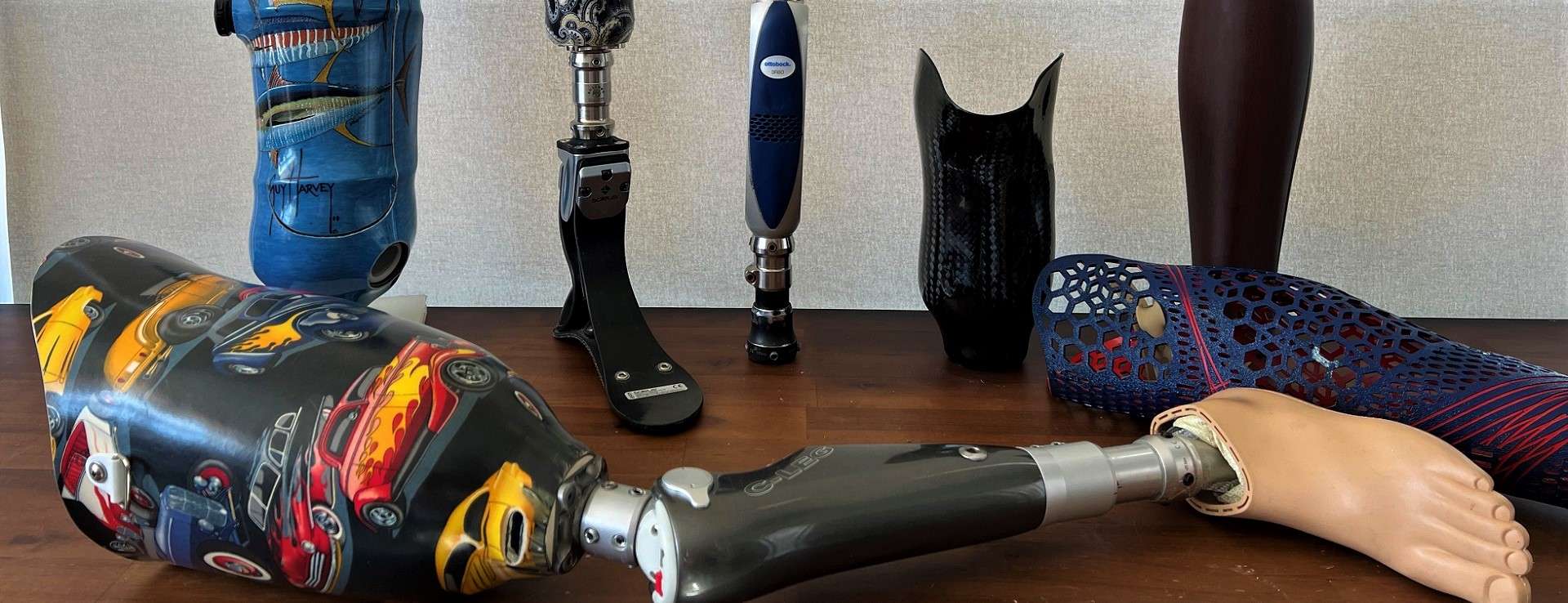Rebound O&P
Updated 2:50 PM CST, Thu November 14, 2024
Published Under: Prosthetics

Amputation is a surgical procedure that involves the removal of a limb or part of a limb. While it may seem drastic, there are several valid medical reasons for this intervention, often aimed at improving quality of life, alleviating pain, or preventing further complications. In this blog, we’ll explore the various reasons why someone might require an amputation, shedding light on the circumstances that lead to this life-changing decision.
- Circulatory Problems - Approx. 50-70%:
Amputations related to circulatory problems including Peripheral Artery Disease and Diabetes are typically preventable with proper foot care, routine check-ups, and blood sugar management.
- Peripheral Artery Disease (PAD): This condition narrows the arteries, reducing blood flow to the limbs and leading to severe pain, ulcers, or gangrene.
- Diabetes: Diabetes can cause neuropathy and vascular issues, increasing the risk of foot ulcers and infections. If these become severe, amputation may be necessary to prevent the spread of infection.
2. Severe Trauma - Approx. 15-20%
One of the most common reasons for amputation is severe trauma resulting from accidents or injuries. This can include:
- Car Accidents: High-impact collisions can cause irreparable damage to limbs, making amputation necessary.
- Industrial Accidents: Injuries sustained in workplaces, such as machinery accidents, may necessitate removal of a severely damaged limb.
- Sports Injuries: In some cases, particularly in extreme sports, injuries can be so severe that amputation becomes the only viable option.
3. Infections - Approx. 10-15%:
Severe infections that do not respond to treatment can lead to the need for amputation. This may include:
- Osteomyelitis: A bone infection that can occur after an injury or surgery, leading to bone death and necessitating limb removal.
- Gangrene: This condition occurs when body tissue dies, often due to a lack of blood flow or severe infection. If not treated promptly, amputation may be required.
4. Tumors - Approx. 5%
Tumors can develop in the bones or soft tissues of the limbs. If they are malignant (cancerous), surgery may be necessary to remove the tumor, which can sometimes involve amputation. This may include:
- Bone Sarcomas: These are cancers that originate in the bones and may require limb removal to eliminate the cancerous tissue.
- Soft Tissue Sarcomas: These tumors can occur in muscles, fat, or other connective tissues, and may also necessitate amputation.
5. Congenital Conditions - Approx. 2-5%
Some individuals are born with congenital limb deficiencies or conditions that may lead to amputation. This can include:
- Severe Limb Malformations: In some cases, limbs may develop improperly, leading to significant functional issues. Amputation may be considered to enhance mobility with a prosthesis.
- Syndromes: Certain genetic syndromes can lead to the underdevelopment or dysfunction of limbs.
6. Severe Burns - Approx. 1-2%
Severe burns can cause irreparable damage to the skin, muscles, and bones. If the injury is extensive and the limb cannot be salvaged, amputation may be the best option to prevent infection and improve the patient’s quality of life.
7. Chronic Pain - Approx. 1-2%
In some cases, individuals suffering from chronic pain due to conditions such as reflex sympathetic dystrophy (RSD) or complex regional pain syndrome (CRPS) may consider amputation. If other treatments have failed, amputation may provide relief from debilitating pain.
8. Failure of Previous Surgeries
Sometimes, previous surgical interventions may not yield the desired results, leading to complications that necessitate amputation. For example:
- Failed Revascularization: In cases of critical limb ischemia, attempts to restore blood flow may fail, leading to further tissue death and the need for amputation.
- Infection or Complications Post-Surgery: If a limb has undergone multiple surgeries and remains painful or infected, amputation may become the last resort.
Conclusion
The decision to undergo amputation is often complex and multifaceted, influenced by medical, psychological, and personal factors. It is typically considered only after all other treatment options have been explored. While amputation can be life-altering, it can also lead to improved quality of life, especially when followed by rehabilitation and the use of a prosthesis.
If you or a loved one is facing the possibility of amputation, it is essential to have open discussions with healthcare professionals to fully understand the reasons for the procedure, the potential outcomes, and the steps that will follow. With the right support and resources, many individuals go on to lead fulfilling lives post-amputation.
NOTE: These percentages listed above are approximations and can vary based on specific studies and populations. For the most accurate and relevant data, consulting recent studies or medical sources specific to your region or demographic may provide more tailored insights.

Comments